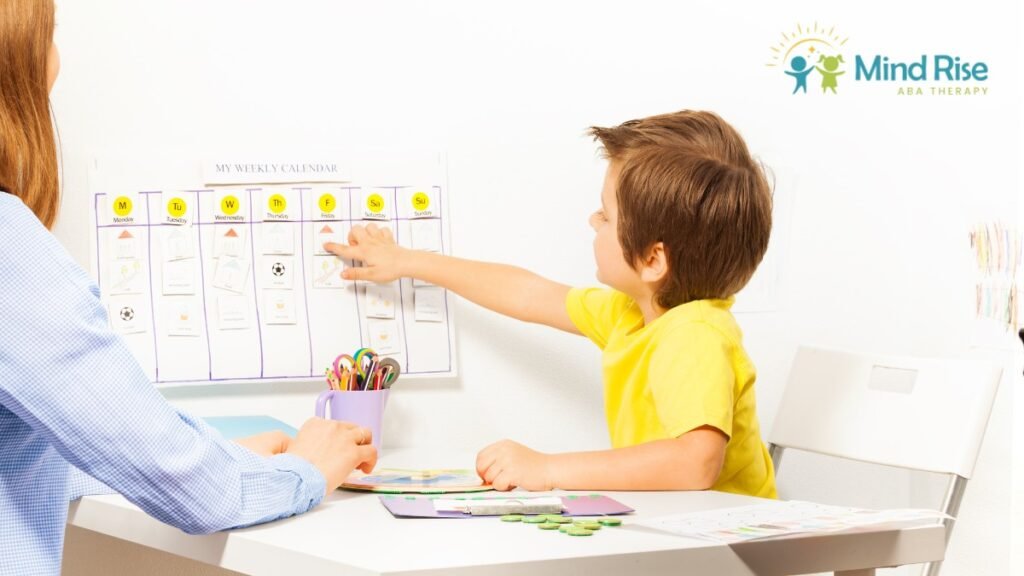Key Points:
- In-home ABA therapy offers personalized, real-time support within a child’s familiar environment.
- Many families in Virginia prefer this model due to its convenience, flexibility, and higher engagement.
- ABA providers in Virginia, like Mind Rise ABA, make it easier for parents to integrate therapy into daily life.
Over the past few years, in-home ABA therapy has gained serious traction across Virginia—and it’s not hard to see why. For many families, juggling school schedules, therapy appointments, work commitments, and everyday life can be overwhelming. So the idea of expert behavioral support coming directly to your door? That’s a game-changer.
ABA therapy providers in Virginia like Mind Rise ABA are increasingly meeting families where they are—literally. By delivering services in the home, we’re seeing better consistency, greater parental involvement, and improved outcomes for many children on the autism spectrum.
So what exactly is driving this shift toward home-based care? Below, we’ll break down the major factors—and why this model might be the right fit for your family.
Therapy Happens Where Life Happens
One of the most powerful reasons for the rise of in-home ABA therapy is simple: the home is where so much of a child’s life happens. From morning routines to mealtime struggles, the real-life challenges families face every day often play out right in the kitchen, living room, or backyard.
In-home therapy allows behavior technicians and supervising BCBAs to:
- Observe natural behaviors in context. Instead of relying on secondhand reports or controlled clinic environments, therapists can see the behavior as it unfolds in real time.
- Tailor interventions to real routines. Whether it’s helping a child transition from playtime to dinner or handle unexpected guests, strategies are applied directly to daily life.
- Promote generalization. When a child learns a skill—like requesting help or following directions—right in the home, there’s a much higher chance it will stick outside of therapy.
This level of contextual relevance is hard to replicate in a center-based model. And it’s especially valuable for children who thrive best in familiar environments.
It’s More Convenient for Busy Families
Let’s be honest—getting anywhere with a child on the spectrum isn’t always simple. Between school drop-offs, traffic, appointments, and siblings, adding one more stop to your week can be draining.
In-home ABA therapy eliminates much of that stress. Here’s how:
- No commute required. Families save hours each week by skipping the drive to and from a clinic.
- More scheduling flexibility. Many in-home providers offer therapy during evenings or weekends to accommodate working parents.
- Reduced transitions for the child. Moving from one environment to another can be overwhelming. Home-based therapy minimizes transitions and potential sensory overload.
This added layer of convenience allows families to focus more on participation and progress—and less on logistics.
Parents Become an Active Part of the Process

In traditional therapy models, parents might receive progress updates during monthly meetings or via reports. But in-home ABA therapy offers something far more impactful: direct involvement.
In a home setting, caregivers can:
- Observe therapy sessions regularly. See how strategies are implemented, what’s working, and where challenges arise.
- Ask real-time questions. Get clarification on techniques or situations as they happen.
- Practice strategies with guidance. Learn how to respond to behaviors and reinforce skills under the therapist’s support.
This level of engagement empowers parents and caregivers to extend therapy throughout the week, creating more consistent reinforcement and faster progress.
At Mind Rise ABA, we’ve seen firsthand how valuable it is when families feel confident and supported in their role. In-home sessions naturally build that bridge between therapy and everyday parenting.
Therapy Can Be More Personalized
Every child is different. But that uniqueness is often easier to honor in a flexible, home-based setting.
Here’s what sets in-home ABA apart in terms of customization:
- Environment-specific goals. Instead of general goals, therapists can work on things like toothbrushing in the actual bathroom the child uses or sharing toys with siblings during their regular playtime.
- Family culture is considered. Routines, rules, and parenting styles differ. Home-based therapists can adapt interventions in ways that respect the family’s values and structure.
- More sensory comfort. Children with sensory sensitivities may do better in familiar settings with their own furniture, lighting, and routines.
Therapy isn’t just about what’s written in the plan—it’s about how well that plan fits into a child’s world. In-home services allow for fine-tuned adjustments that make goals feel more reachable.
Increased Access in Underserved Areas
Virginia has many rural and suburban communities where center-based ABA services are harder to come by. In-home ABA therapy can close that gap.
This is especially important for:
- Families without transportation. In-home care ensures children don’t miss out on services due to lack of access.
- Communities far from clinics. Instead of driving 45 minutes or more, families can get consistent, quality support right at home.
- Kids with mobility or medical challenges. Traveling to a clinic may be too disruptive for some children. Home therapy keeps things manageable and consistent.
We serve families across Virginia who benefit from our ability to come to them—regardless of zip code or city size.
Fewer Environmental Distractions
While ABA centers are designed for learning, they can sometimes be overstimulating or unpredictable—especially for younger kids or those who are sensitive to new surroundings.
In-home ABA therapy offers a controlled, familiar setting that can:
- Reduce anxiety or sensory overload.
- Minimize time spent acclimating to a new place.
- Help children stay focused and engaged during sessions.
This doesn’t mean in-home is always better, but it can be a more peaceful place to work on tough behaviors, especially early in treatment.
It Supports Smoother Transitions to School or Community Life

When therapy is happening at home, it naturally incorporates skills that help a child succeed in broader life settings.
Therapists can work on:
- Morning and bedtime routines. These daily tasks are crucial for independence and school readiness.
- Using the toilet in a home bathroom. A much more realistic and sustainable skill than using one in a clinic.
- Practicing social skills with siblings or neighbors. These real-life interactions build confidence far beyond structured playgroups.
By weaving therapy into the fabric of daily living, in-home ABA supports smoother transitions into preschool, community activities, and beyond.
It Feels More Collaborative, Less Clinical
Families often tell us that in-home ABA therapy feels more like a partnership—and less like outsourcing care to an outside provider.
Here’s why:
- Sessions are personalized and responsive to each day’s realities.
- Therapists become familiar faces in the child’s home and build meaningful connections.
- Parents are treated like teammates, not spectators.
That relational aspect makes it easier to navigate tough days, celebrate wins, and stay aligned on goals. It’s not about replacing parents—it’s about working together in a way that’s realistic and sustainable.
The Bottom Line
In-home ABA therapy is growing in popularity across Virginia because it offers something many families are craving: support that fits into their real lives. From reducing stress to improving outcomes, the home-based model continues to meet families where they are—literally and figuratively.
At Mind Rise ABA, we provide in-home ABA therapy in Virginia with a focus on collaboration, transparency, and meaningful progress. We know that home is more than just a setting—it’s where your child feels safe, and where real growth can take root.
Get in touch today to learn how our ABA therapy in Virginia can support your child’s development in the comfort of home.

